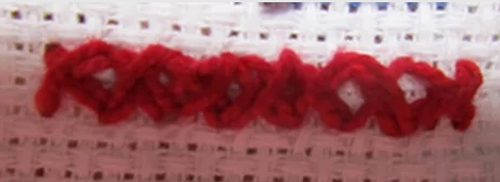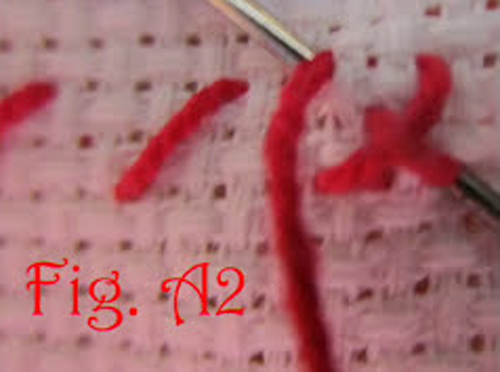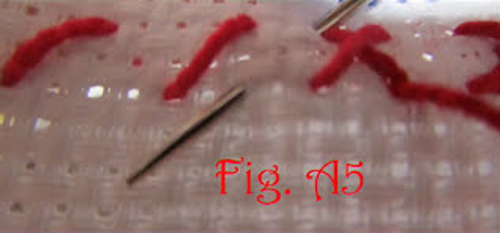
LESSON 97: REVERSIBLE CROSS POINT
14 de October de 2021Reversible cross stitch tutorial:
With this tutorial for bow stitch you can make reversible cross stitch and you will see it the same from the back as from the front.
Identical dotted lines are made on both sides of the imaginary fabric. It is used in fine and translucent fabrics, when the threads on the reverse of the garment are seen against the light and for reversible garments.
Each line of crosses is worked in four passes, starting on the left.
Fig. A: Step 1: Take the needle out at 1, put it in 2, take it out at 3 and put it back in 4. Repeat the steps to the end of the row. Take the needle out at 5, under the center of the last stitch, put it in at 6, making a half diagonal, and take it out again at 5.


Fig. B: Put the needle in 7 making another diagonal half, take it out at 6 and put it in 7. Step 2: Work from right to left. Take the needle out at 8 and put it in 9. Repeat until the end of the row. After crossing the last stitch, pull the needle out at 10.
Fig. C: Pass 3: Work from left to right making a point (10 to 11) in each front space. On the far right, take the needle out at 6 and put it in at 5, below the previous diagonal, and take out the needle as in the drawing. Pass 4: Work from right to left, crossing each diagonal stitch made in pass 3.

From here we invite you to try it and you will be surprised by the effect. I encourage you to try and you will love it.
Follow the tutorial step by step and you will see how while you are sewing you can think of other ways to make other stitches, even combined with all the ones that I am putting here. You can use it both in borders, as in curtains, sheets, towels etc. or as a simple ornament point in one of your paintings. It is best to follow the video step by step here:
Materials
- You need a sharp pointed needle. In your trusted haberdashery they can advise you on this.
- Thimble, we know that it is not easy to get used to it, but the earlier you adapt, the better, you will avoid many punctures.
- Special thread for sewing. Or you can also use fine crochet yarn if it is to decorate something
- Frame, there are made of wood, plastic and silicone. Lately I spend the silicone ones because I like them better, but that goes to taste.
- Light, the more the better and to be able to be natural
If you liked this lesson in fancy knitting, you can try some more of the ones we publish here

Muy agradecida por este alcance, gracias a estas novedades podemos tener mas conbinacioes para realizar en nuestros bordados. Que sigan los éxitos